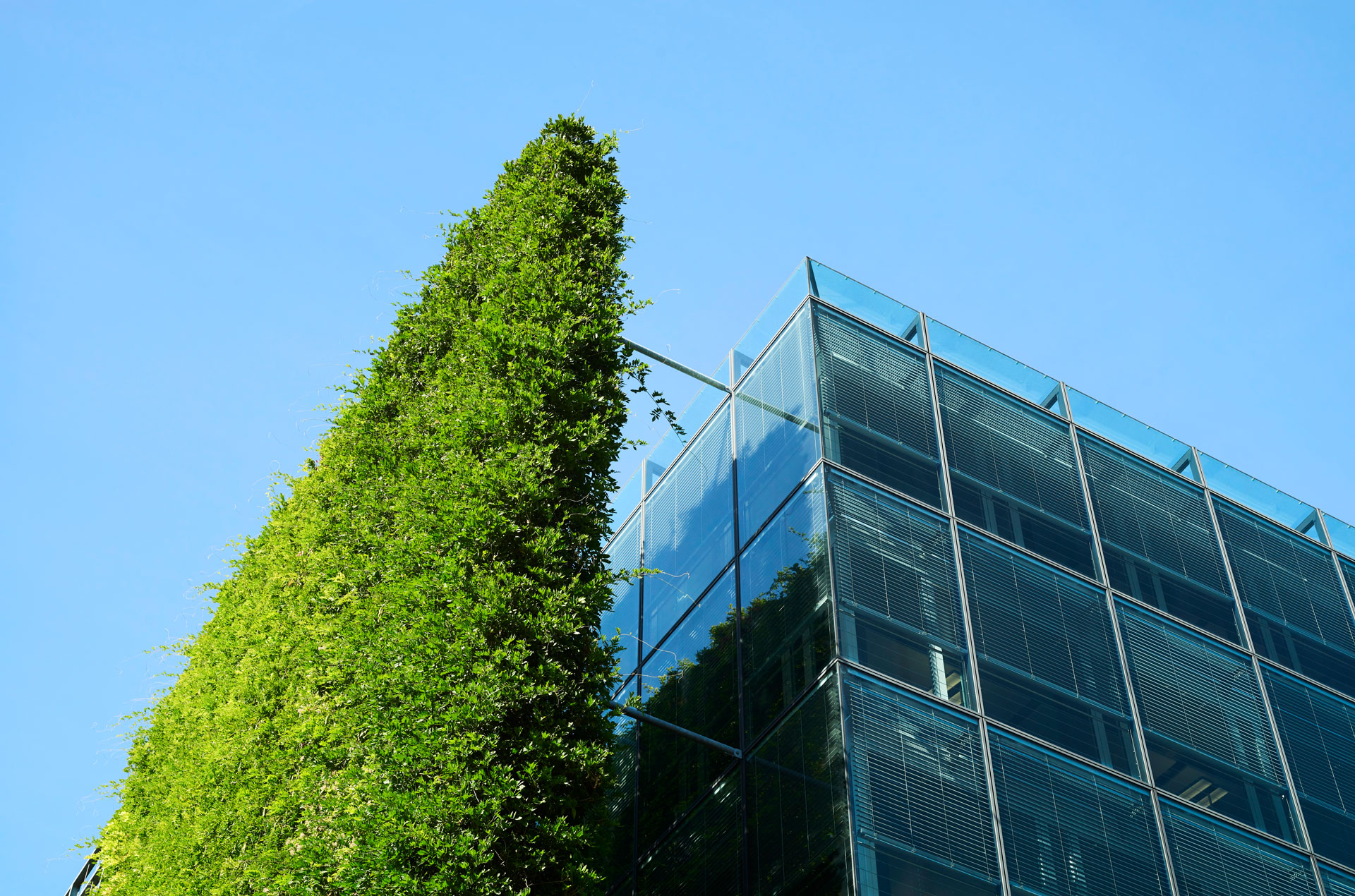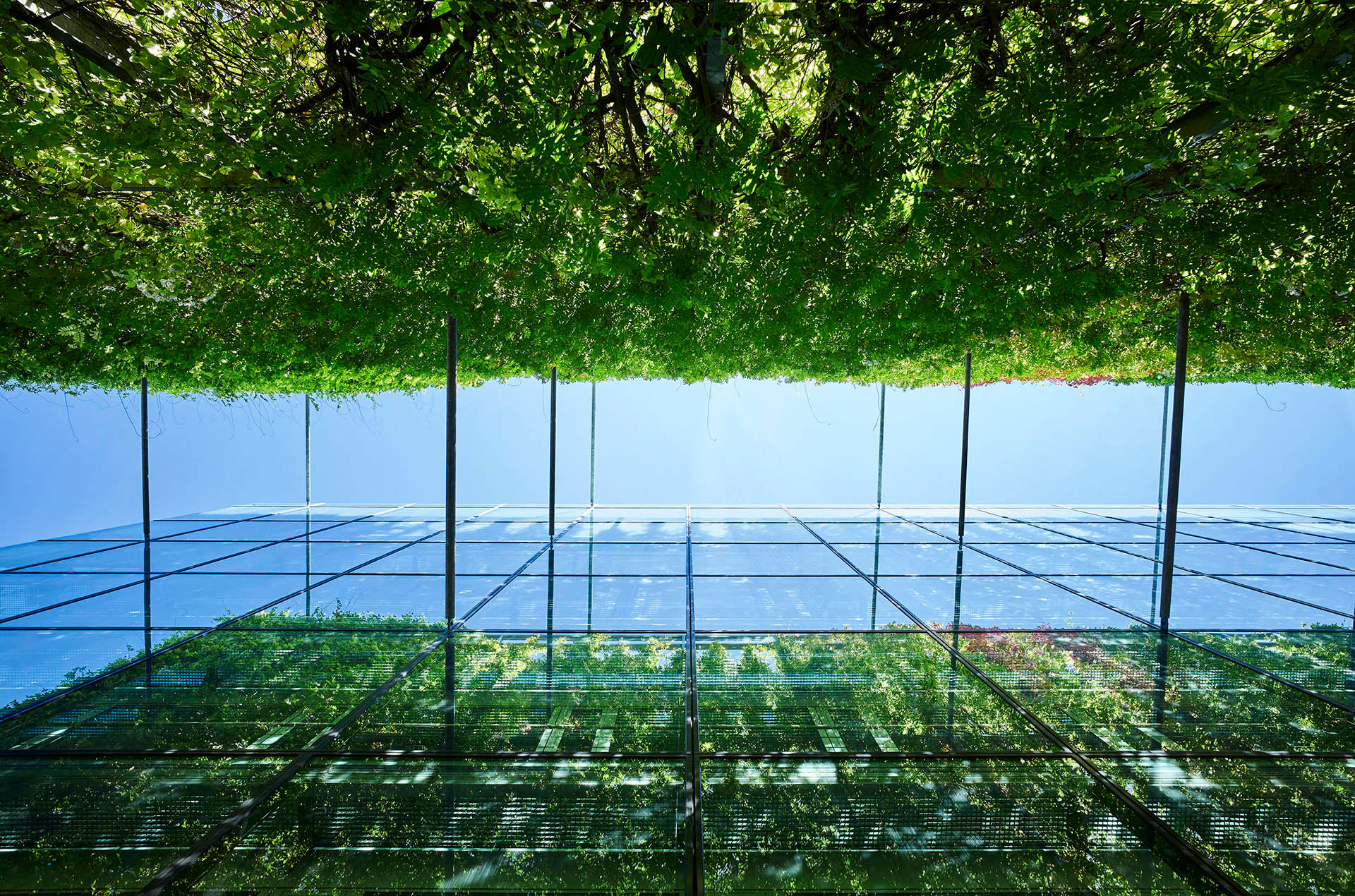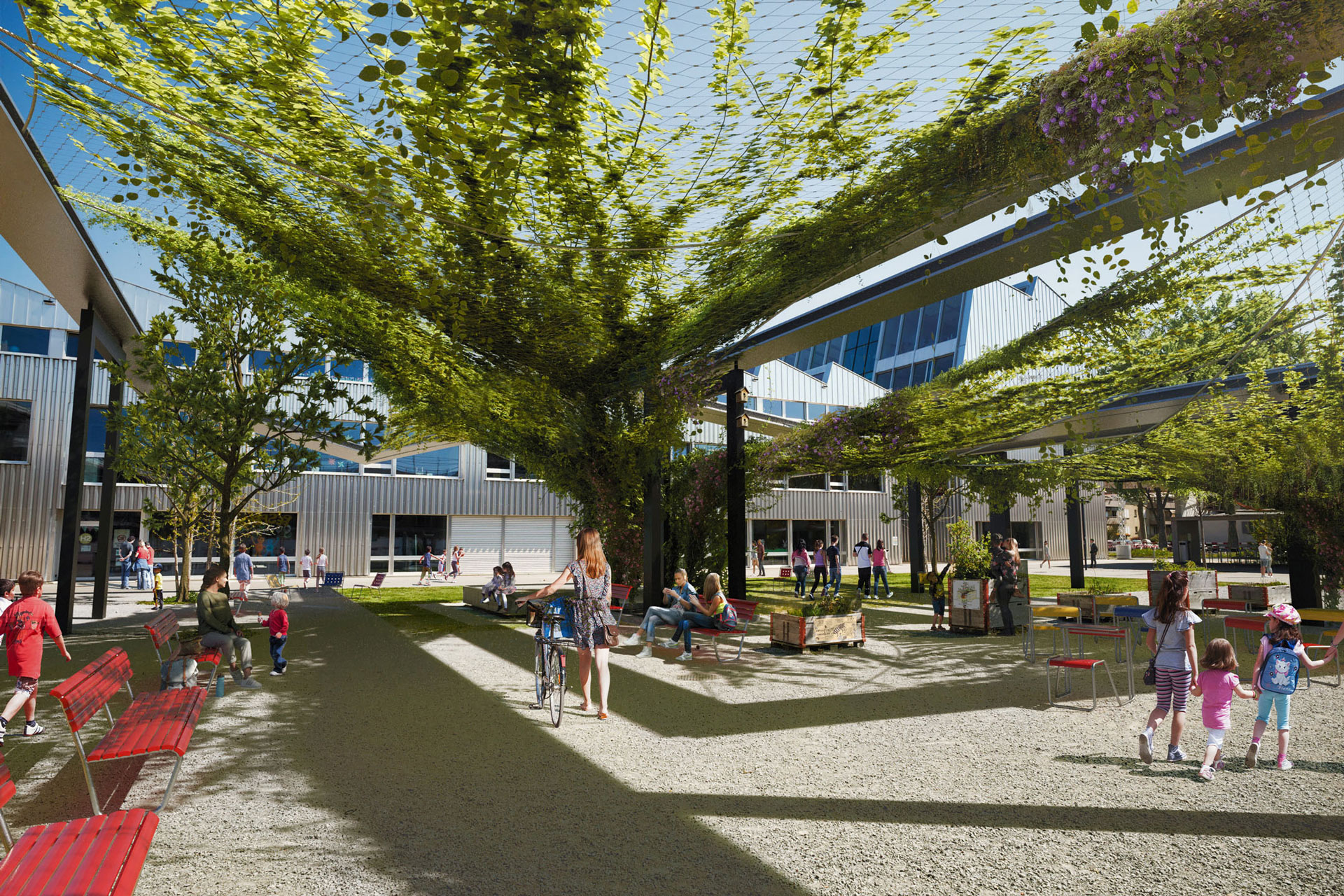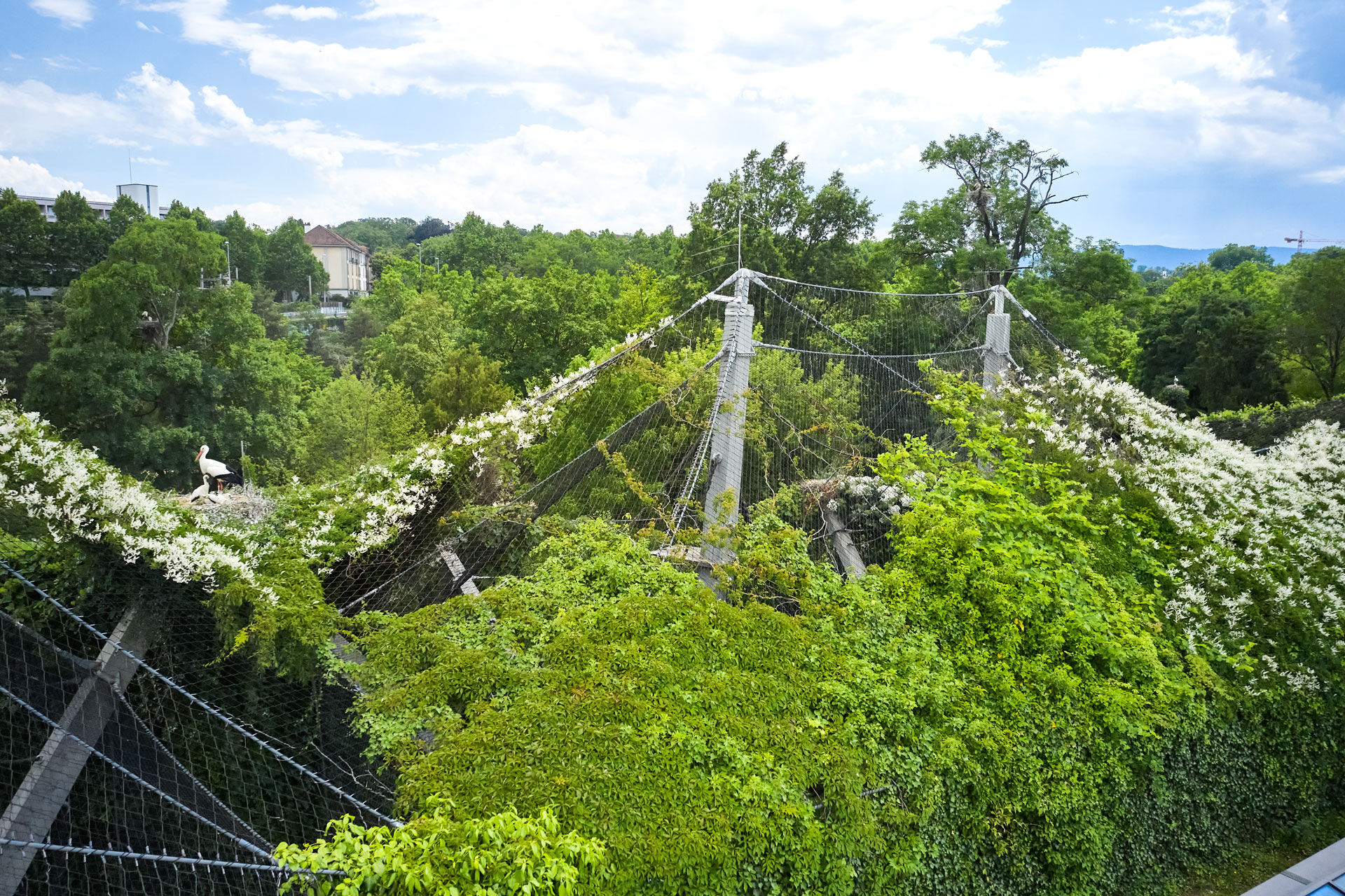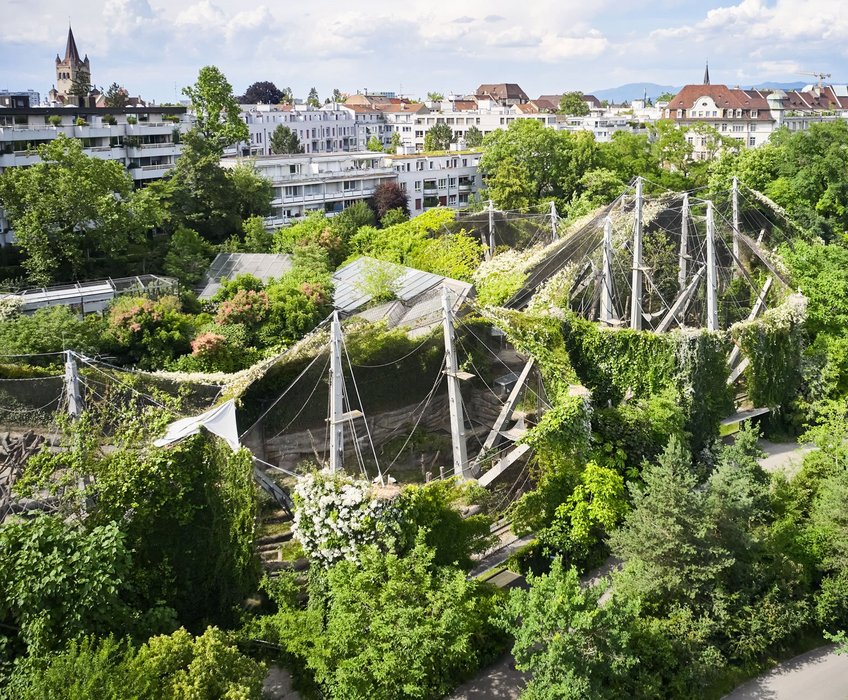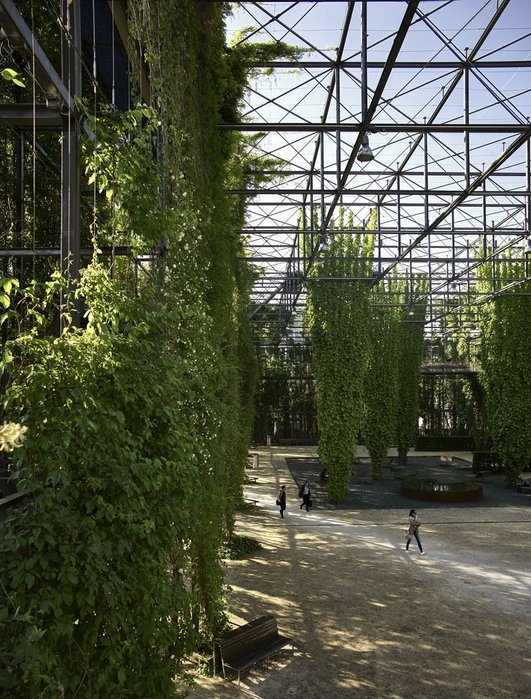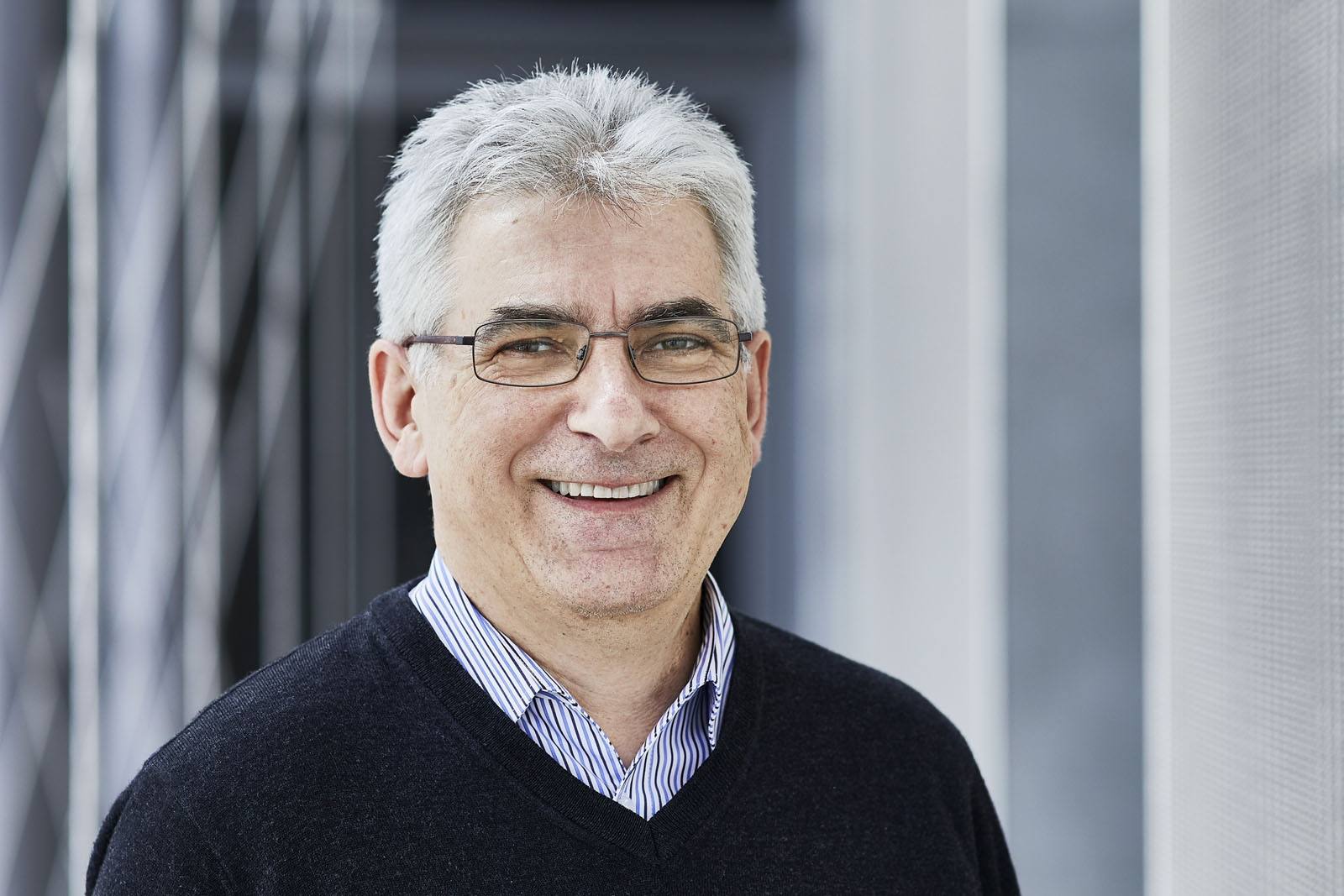
More green brings shade and quality
In many cities we find places that offer little protection from the sun and heat on summer days. These heat islands could be made much more inviting with greenery. Green tendril structures would be an excellent solution for developing urban spaces with a near-natural climate.
Summer days can become unbearably hot in cities. Dense development and the sealing of open spaces absorb solar radiation. The surrounding area heats up. This heat island effect causes temperatures in urban areas to be several degrees higher than in the surrounding countryside. With climate change, hot spells occur more frequently, for longer, and are hotter. Urban planners, architects, landscapers and companies like Jakob Rope Systems are therefore working on solutions to reduce the heat island effect in cities.
Newly designed spaces with green and shaded areas can make an important contribution. Rudolf Lehmann is convinced of this. As an engineer at Jakob Rope Systems, he has been involved in projects for the greening of cities and buildings in Switzerland and abroad for 20 years. In this interview, Rudolf Lehmann describes the current situation in cities and how knowledge gained from research projects can be used to develop new tendril structures.
Mr. Lehmann, Jakob Rope Systems has submitted a highly acclaimed design in 2021. A green rope structure that shades an inner-city square. Is this a way forward for our cities?
In many cities we see places without trees, where great heat arises. In the summer temperatures here can be up to 60 – 70 degrees. This is unbearable for humans and animals. Another problem is added. In these cities the subsoil is occupied by pipes, sewers or by underground garages. Planting trees, whose roots need space, is impossible. A free-standing greenery with rope structures offers an alternative to this. The climbing plants growing on them provide shade.
Plants as protection against the sun. Where does this approach come from?
Jakob Rope Systems already started installing such solutions 20 years ago. The MFO Park in Zurich is an example of this. Together with architects, landscape designers and the city of Zurich, we developed a pattern here that is still valid today. A free-standing, cuboid architecture with green walls and roof.
Another design was created for a zoo enclosure in Basel. Here we developed a double-walled mesh enclosure for apes. The outer walls of the enclosure serve as a climbing structure for climbing plants. The vegetation is now magnificent and offers the animals a large-scale shade canopy on hot summer days with a pleasant microclimate underneath.
All this goes back to the idea of pergolas.
Exactly. Pergolas have been built in southern countries since ancient times as green shade roofs. The roof, raised from the ground, creates a space for shade and cooling. The green leaves, through their evaporation, cause a temperature drop of 3 - 4 degrees. This creates a natural cooling with a natural atmosphere.
What do we know today about the effect of green spaces?
We see that the greening of facades takes on an important design function. This is thanks to the climbing plants that thrive in many latitudes in a great variety. With the passing of the seasons, beautiful changes of colors, inflorescences and fragrances take place. Green facades are alive - if you want to put it that way. The most important function, however, is cooling through green surfaces on roofs, facades and under pergolas.
Has the urgency for green increased in recent years?
We feel an increase in requests for greening. The inquiries come from Switzerland, Europe, the USA, Australia and also from Southeast Asia. Many of them relate to retrofitting greening for existing buildings. The buildings are often made of brick, concrete, wood or have exterior insulation. Here, it is important to develop solutions that meet the building physics requirements.
What challenges will cities face in the future?
Let's take the example of Geneva. Here, there are around 40,000 trees in the urban area. In recent years, between 300 and 500 of these trees have had to be felled each year. Heat, exhaust fumes, road salt and compacted soil had taken their toll on these trees. In strong winds, weakened trees become a danger. Planting new trees, in turn, is difficult in many places because the soil is occupied or polluted. And depending on the tree species, decades pass before a tree develops its full splendor and impact. So cities need to find other solutions to counter rising temperatures, air pollution and noise.
Where in cities is the potential for greening greatest?
I see great potential on roofs in urban areas. Then on the facades of buildings. Also on walls and walls running along railroad tracks or streets. In many cities, above-ground parking zones have been created in recent years. These zones get very hot in the summer. Here I also see opportunities for more greenery and shade.
Do you know of any cities that are pioneers in greening?
The surroundings of Zurich provide interesting examples. Several greening projects have been realized here. The MFO Park in Zurich, the parking garage in Sihlcity or a commercial building in Glattbrugg. In Zurich, the "Grün Stadt Zürich" department, together with the city's horticultural department, has developed various options for greening buildings. Other cities and also private planners can now take their cue from these projects.
How are these spaces used by people today?
In the green MFO Park, people gather at any time of the day on hot summer days. In the morning to play boules, over lunch for a break or in the evening for meetings and events. Almost all needs of city people can be served here. Even when it rains, the canopy provides shelter. Thanks to the green facade, the operators of the commercial building in Glattbrugg today achieve reduced cooling requirements of up to 35 percent.
Have the technical solutions for greening changed recently?
We can green buildings today with flat tendril structures. And we can green squares with free-standing structures and thus shade them. Both on a large scale or on a small, selective scale. The technical possibilities have grown overall. At Jakob Rope Systems we have expanded and improved the range for building climbing structures. Today we offer system solutions, as well as the implementation of unique solutions and even modular greenery for home and garden. As material we use high-strength rope and net structures made of stainless steel. With this we realize filigree lightweight structures that are maintenance-free for 30 - 50 years. The only thing that remains indispensable is the care of the plants, which should take place once or twice a year.

In which areas is there still a need for more research?
Something that has been little studied is the effect of wind forces on a vegetated tendril structure. It would be interesting to know how different plants at different growing heights behave in the wind. For example, what wind forces act on the edges of buildings, where air vortices are created? How do plants deal with this? A project at the Lucerne University of Applied Sciences and Arts is currently researching precisely these questions.
Plants like the pipevine show amazing behavior in the wind.
We see intelligent adaptation behavior in some plants. If they are exposed to a strong wind, the plants lay their leaves flat in the direction of the wind. The plants reduce their surface to the wind. In very strong storms, the plants eventually shed some of their leaves. Certain plants therefore help to reduce wind forces acting on our climbing structures to a certain degree.
Could this knowledge be used to develop better ranking structures in the future?
This is exactly the point. The technical implementation of large-scale tendril structures will thus change. With the new knowledge, we can dimension material more precisely. More economical solutions are also possible. We will be able to build structures that are lighter and more filigree because we can calculate the maximum forces acting. Overall, we will achieve greater precision in planning.
Contact:
Rudolf Lehmann is an engineer and oversees business development at Jakob Rope Systems. He has been accompanying projects for the greening of cities and buildings in Switzerland and abroad for 20 years. He is convinced that the situation in cities and climate change leaves no choice but to create more green and thus more quality for cities.
Downloads

The program is presented in two parts. In the GreenSolutions reference brochure, you will find many real-world applications that show you the potential of greening.
Download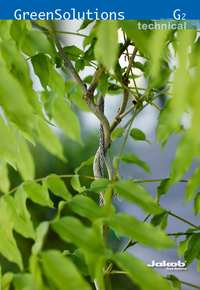
The program is presented in two parts. The catalog GreenSolutions Technical contains all wire rope products with their technical information for your greening project.
Download
